Idea by
Žiga Kreševič
Call for ideas 2016
Inhabit the Wall
Inhabit the Wall
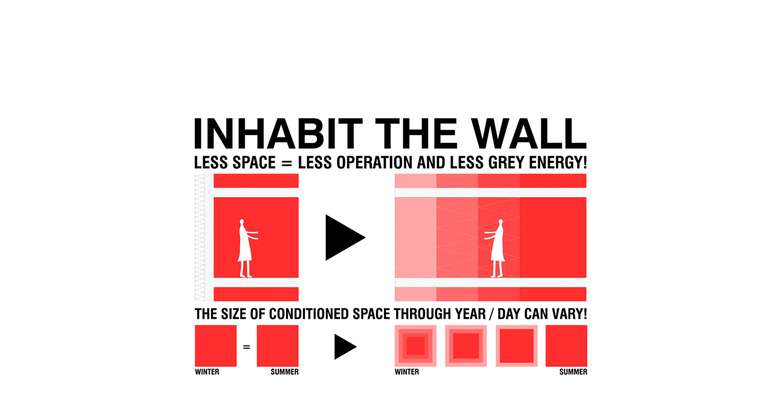
In the name of environment, architecture is becoming exclusionary and so alien in its surroundings. By abandoning a wall as a full-contact arrangement of different materials, a set of membranes defines new architecture. Traditional thick insulation layers might lower the operating energy, but at the same time consume extreme amounts of grey energy to produce and are highly unrecyclable. The idea aims at addressing the problem of energy use in buildings at its core: The size of heated space in combination with the production costs. Thermal isolation as such is obsolete, but its functioning principle of the entrapped air between the membranes provides for thermal performance. What is more, this performance is adoptable, as the size of space can vary in accordance with outside conditions. Through thermal gradation it introduces realistic adoptability, better recyclability and cheaper m2 prices of buildings. By turning thermal insulation into a spatial quality we can inhabit the wall!
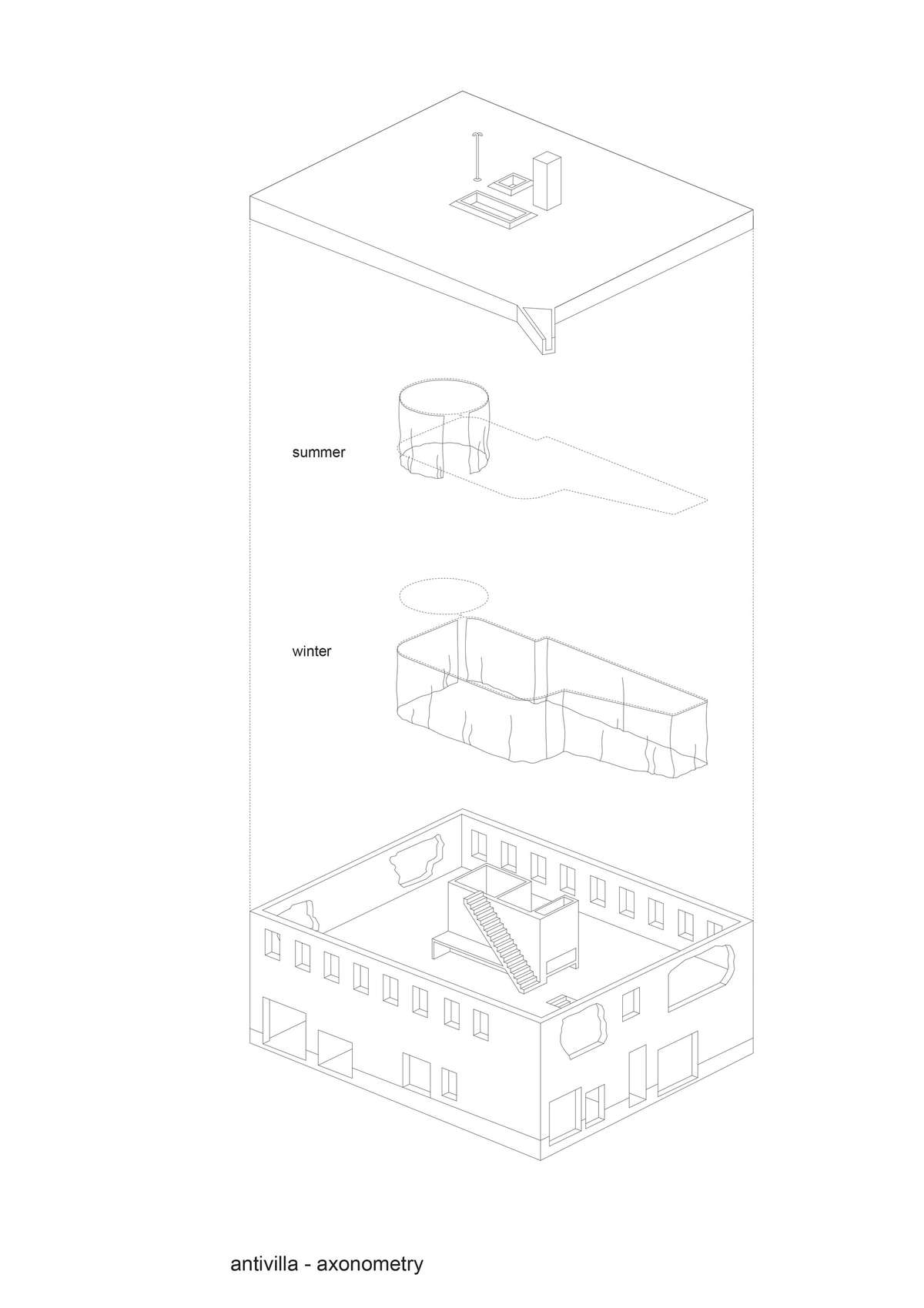
Antivilla, a controversial project by brandlhuber+, Emde & Schneider, addresses the topic of thermal refurbishment by questioning the sense of contemporary refurbishment praxis and building regulations. The existing wall represents only a single layer in a set of membranes, which establish several thermal zones. © Erica Overmeer
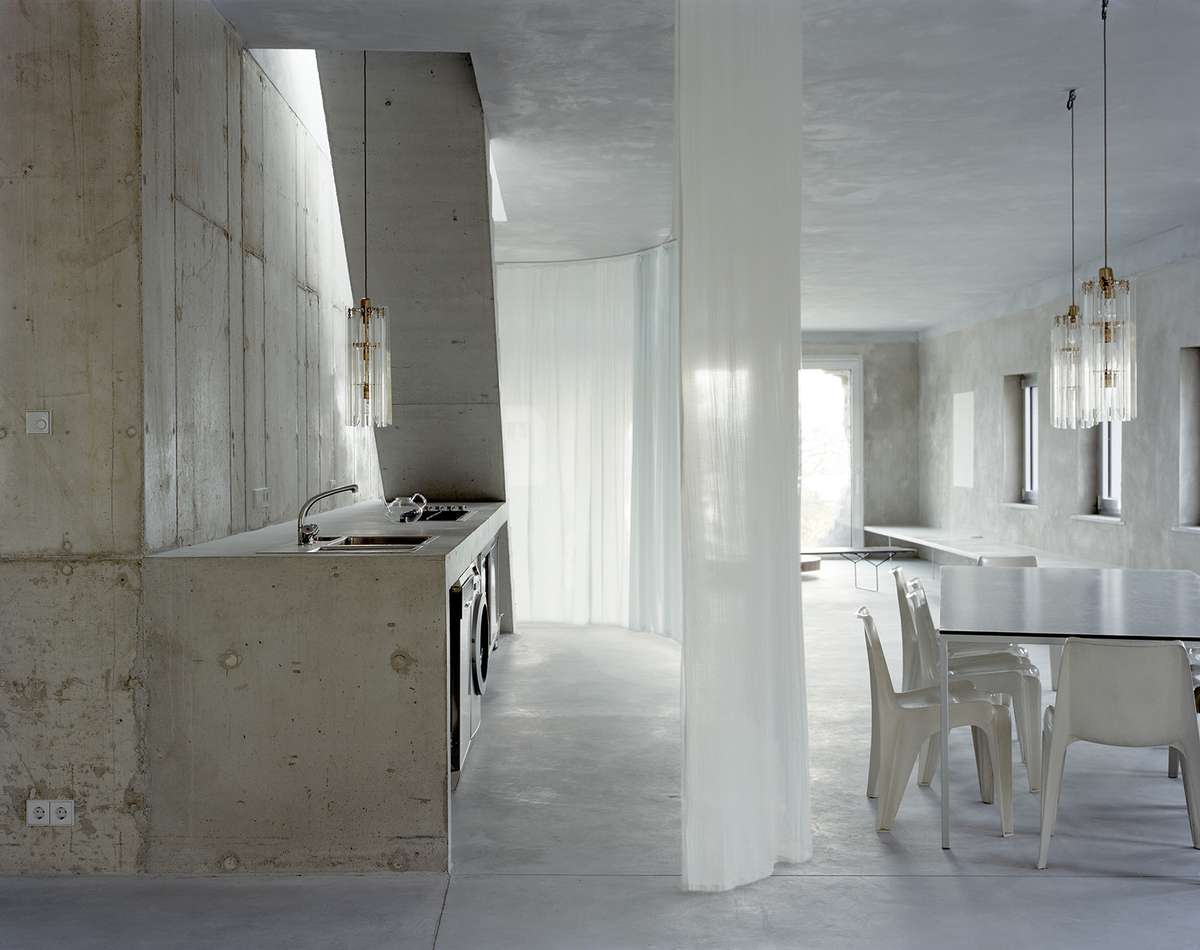
Antivilla by brandlhuber+, Emde & Schneider. Interior view of one of the curtains. Fire as a traditional source of heat and light is replaced by a composition of furnace, bathroom and sauna and represents the hottest zone of the house. © Erica Overmeer
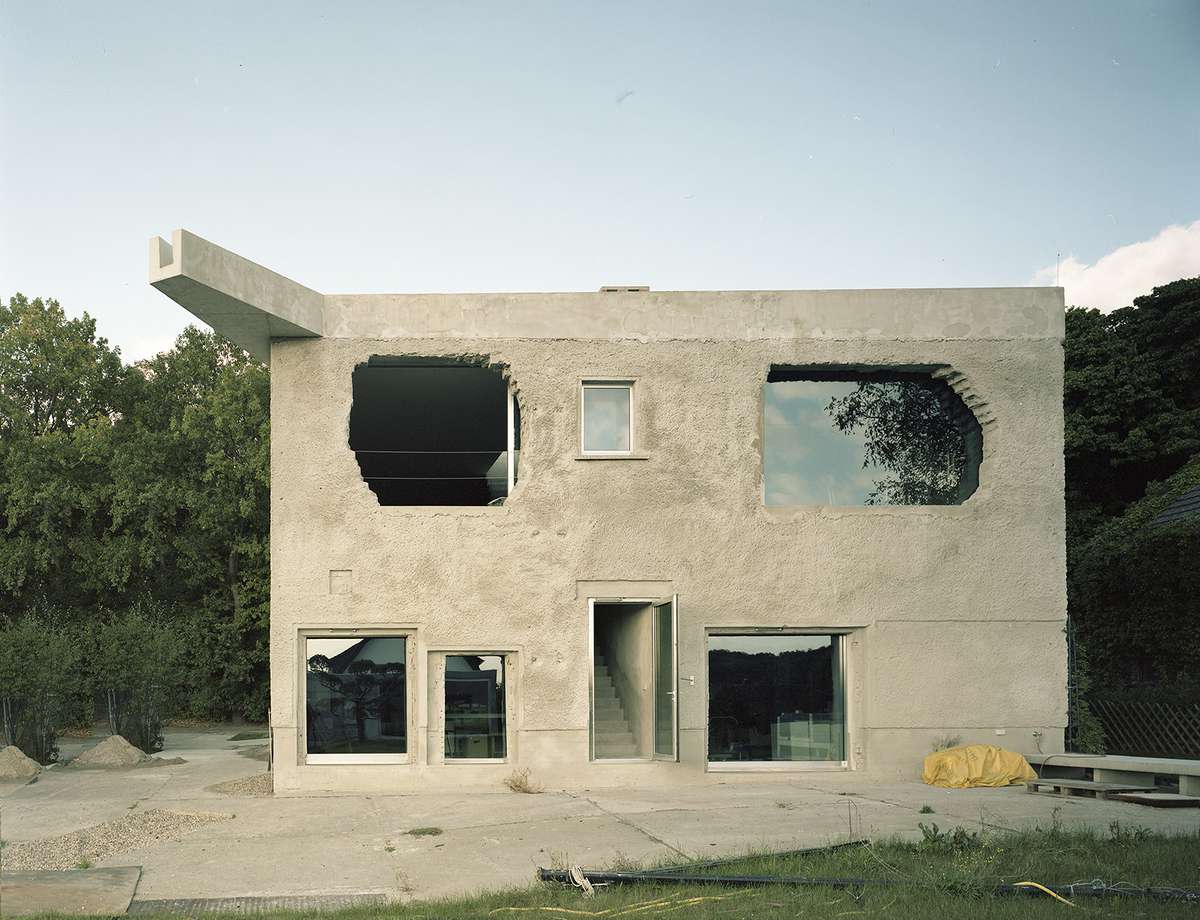
Antivilla by brandlhuber+, Emde & Schneider. Exterior view. © Erica Overmeer
Inhabit the Wall
Inhabit the Wall

In the name of environment, architecture is becoming exclusionary and so alien in its surroundings. By abandoning a wall as a full-contact arrangement of different materials, a set of membranes defines new architecture. Traditional thick insulation layers might lower the operating energy, but at the same time consume extreme amounts of grey energy to produce and are highly unrecyclable. The idea aims at addressing the problem of energy use in buildings at its core: The size of heated space in combination with the production costs. Thermal isolation as such is obsolete, but its functioning principle of the entrapped air between the membranes provides for thermal performance. What is more, this performance is adoptable, as the size of space can vary in accordance with outside conditions. Through thermal gradation it introduces realistic adoptability, better recyclability and cheaper m2 prices of buildings. By turning thermal insulation into a spatial quality we can inhabit the wall!
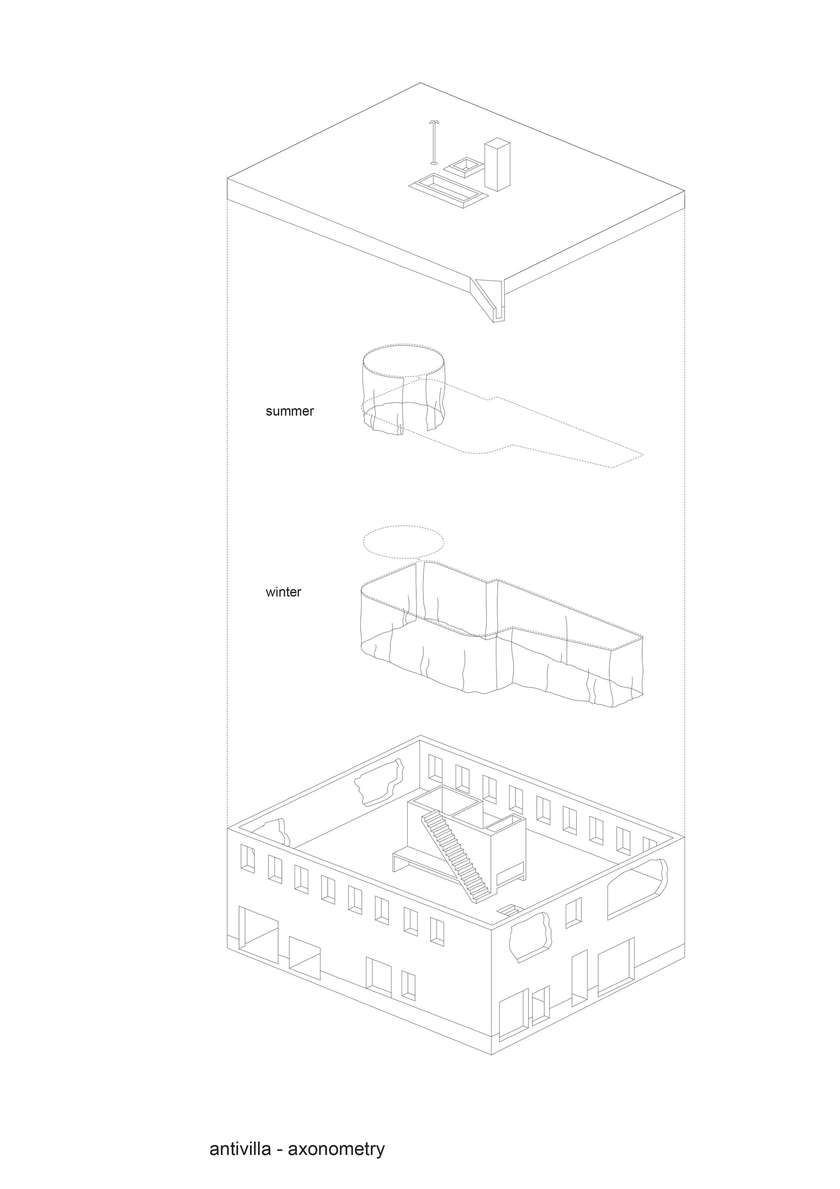
Antivilla, a controversial project by brandlhuber+, Emde & Schneider, addresses the topic of thermal refurbishment by questioning the sense of contemporary refurbishment praxis and building regulations. The existing wall represents only a single layer in a set of membranes, which establish several thermal zones. © Erica Overmeer
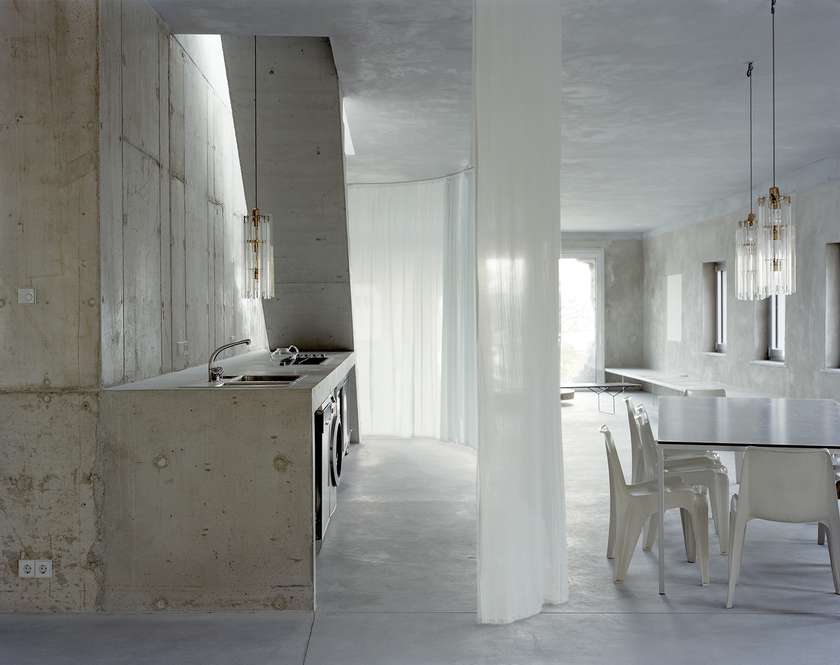
Antivilla by brandlhuber+, Emde & Schneider. Interior view of one of the curtains. Fire as a traditional source of heat and light is replaced by a composition of furnace, bathroom and sauna and represents the hottest zone of the house. © Erica Overmeer
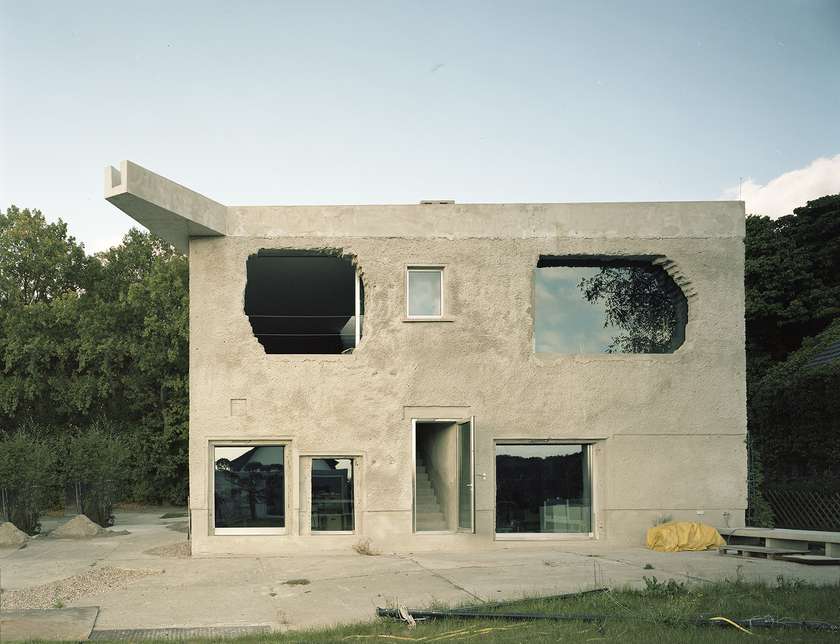
Antivilla by brandlhuber+, Emde & Schneider. Exterior view. © Erica Overmeer